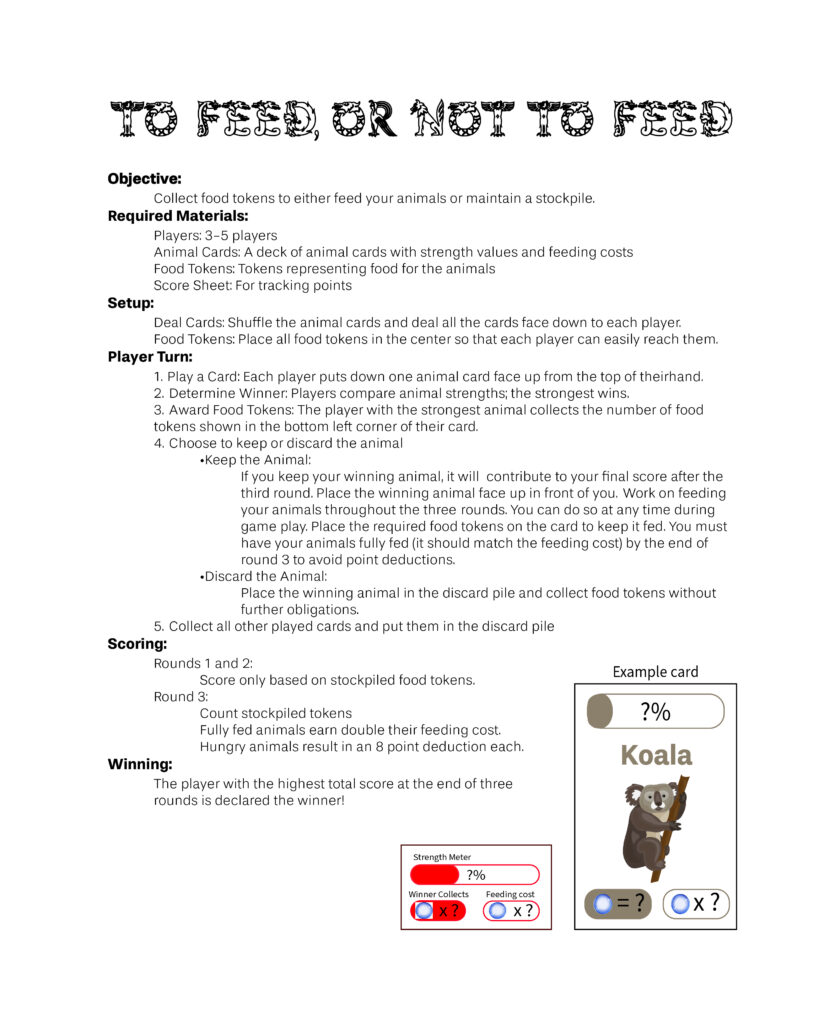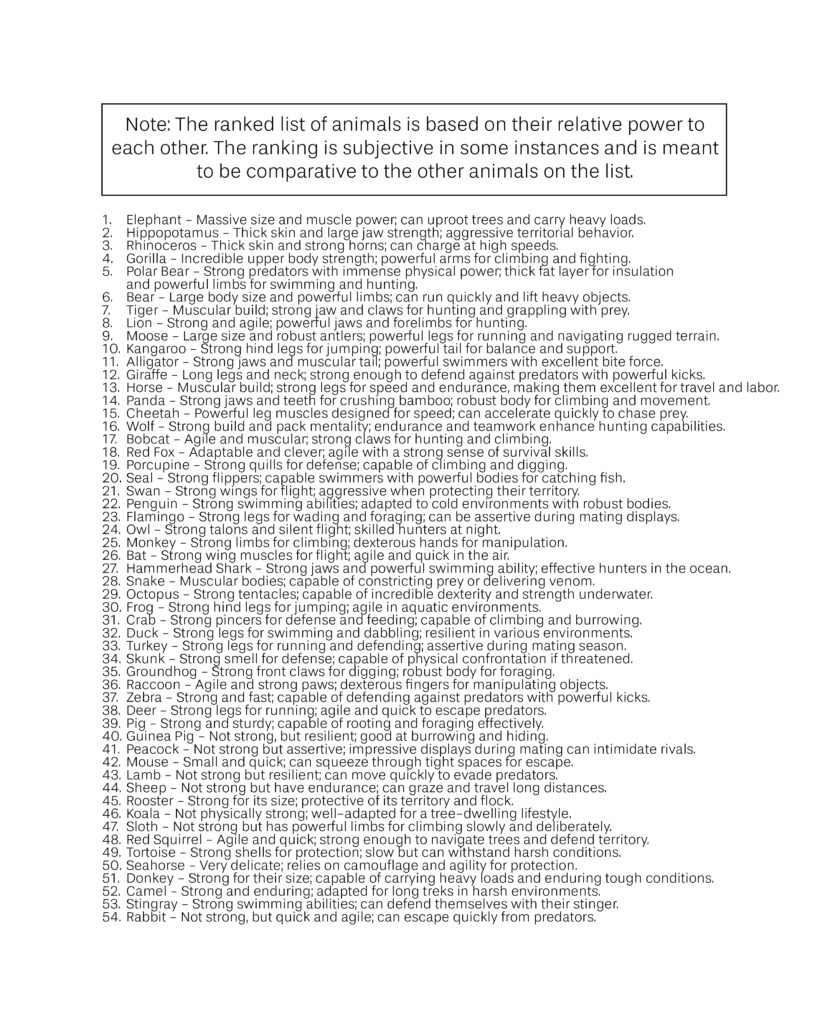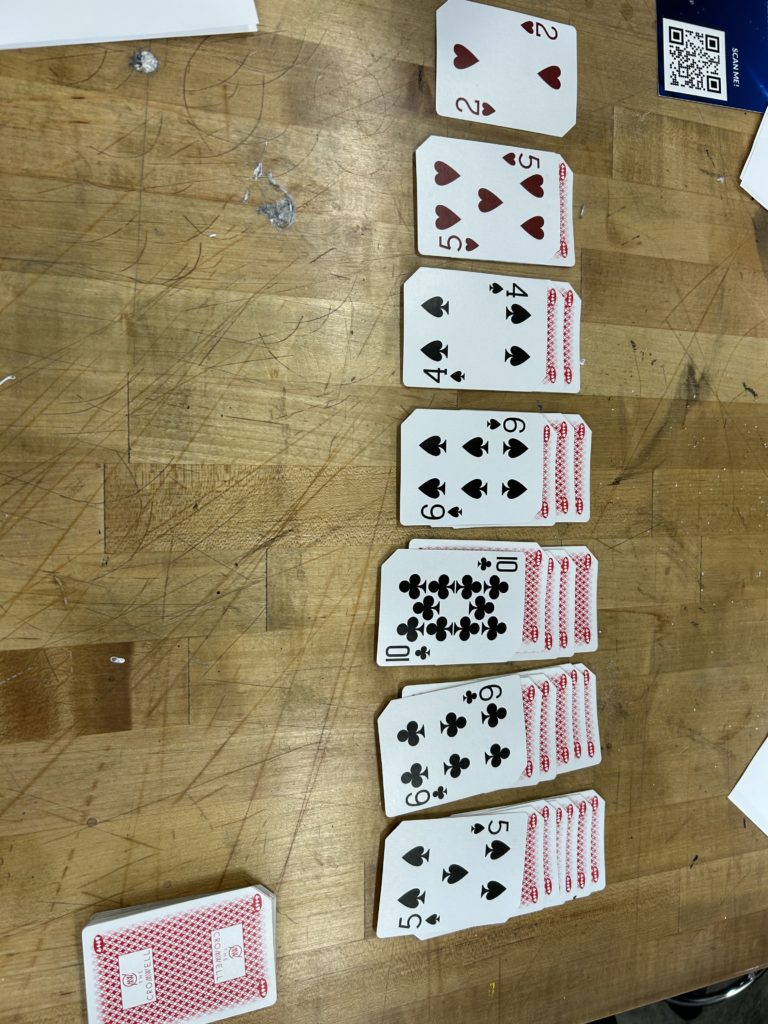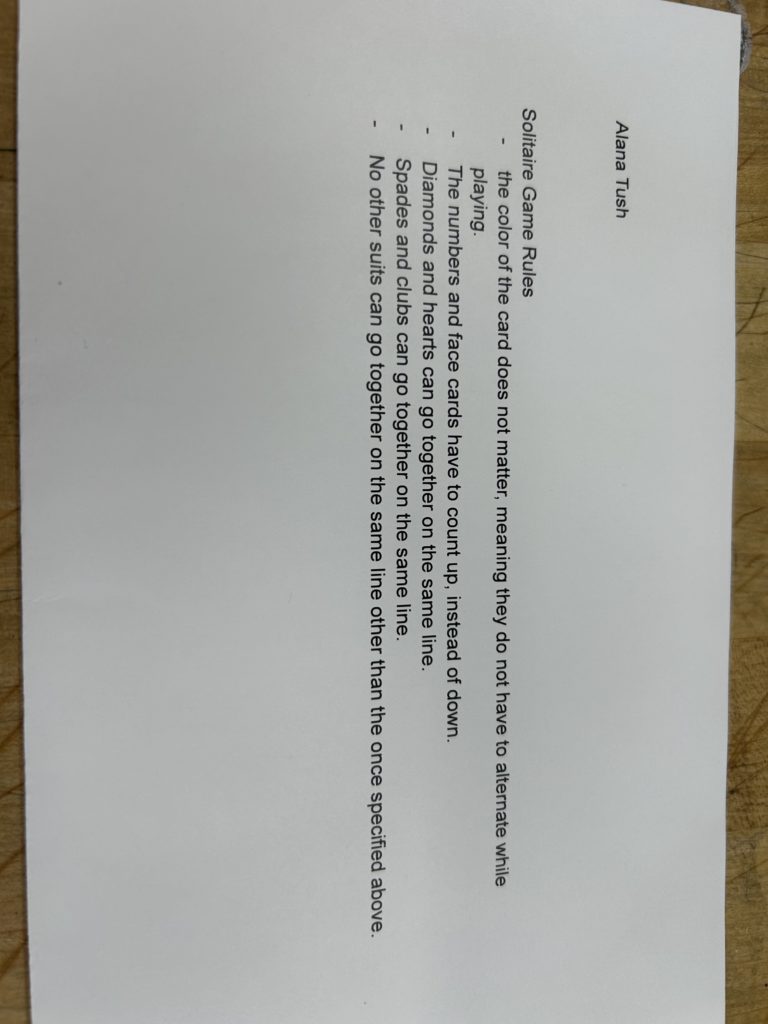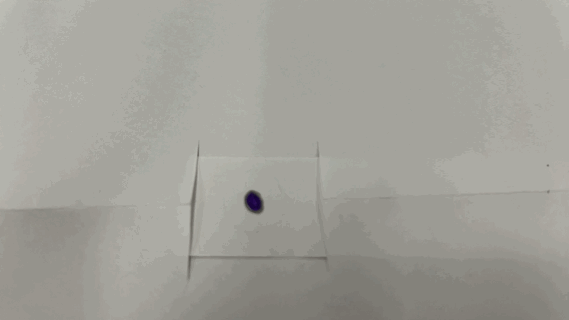Alana Tush
Tokaido Review
Was it fun? Yes, the game was fun because of the slight competition. The game wasn’t too competitive because you all have a turn, but there is a lot of strategy involved.
Would you play again? I think i’d give them game another round…
Is it interactive? Yes, this game is very interactive, for example, if you pick a spot on the board where someone else wants to go, you mess their chances up of having that spot.
Was it easy to learn? It was fairly east to learn, like any game once you start playing you get the hang of it.
Game Ideas
- Translator is a guessing game in which the players collaborate by using hints that the game provides to translate a word or sentence in a foreign language.
2. Years ago is a guessing game in which the players compete by using their memory to guess how many years ago certain categories (songs, movies,…) came out.
3. Guess the professor is a guessing game in which the players compete by using clues written on cards to guess which professor the card is describing.

